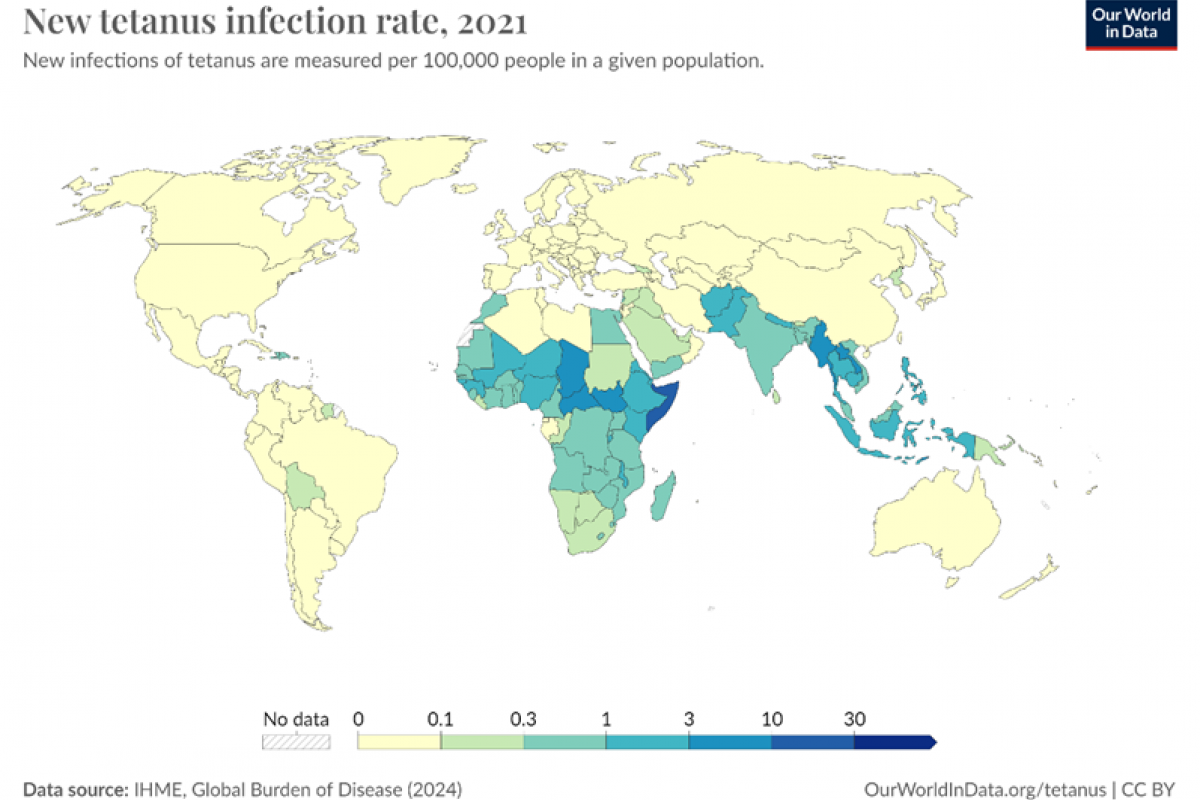The United States could safely reduce the frequency of tetanus and diphtheria booster shots for adults and save an estimated $1 billion per year, according to a new review led by researchers at Oregon Health & Science University.
This conclusion depends on the U.S. maintaining very high childhood vaccination rates.
Vaccines for tetanus and diphtheria are referred to as “legacy” vaccines by the healthcare industry because they were developed in the 1920s, during a time when the U.S. Food and Drug Administration was in its early stages of development.
The United States uses three types of combination vaccines that include protection against tetanus: DTaP, Tdap, and Td. DTaP and Tdap vaccines also include protection against diphtheria and pertussis.
According to a review published in the journal Vaccines and Clinical Microbiology Reviews on July 15, 2025, these vaccines are among the most successful ever created.
In this review, researchers compare the effectiveness of the tetanus and diphtheria vaccination programs with that of other common childhood vaccines and examine an evidence-based approach to adult booster vaccination schedules.
This success is reflected in the significantly low incidence of disease in the U.S. population: fewer than one case of tetanus per 10 million person-years and approximately one case of diphtheria per billion person-years.
They wrote, Our findings suggest that once individuals complete the childhood vaccination series, decennial booster vaccinations may no longer be necessary to maintain protective immunity in the general population.
Furthermore, updating the current vaccination program to eliminate adult decennial booster doses would not only align U.S. recommendations with those of the World Health Organization (WHO) but also align with the recommendations of other international health organizations.
Still, it could also enhance the risk-benefit ratio of vaccination.
“By maintaining high childhood vaccination coverage, we not only protect kids, but we may be able to reduce adult booster vaccinations,” said author Mark Slifka, Ph.D., professor of microbiology and immunology in the OHSU School of Medicine and the Oregon National Primate Research Center, in a press release on July 15, 2025.
“That would save $1 billion a year in the U.S. while maintaining the safety and protection of the general population.”
This research team has previously conducted studies that suggest the vaccines generate at least 30 years of immunity against life-threatening infections, far beyond the current 10-year booster recommendations.
In contrast to U.S. policy, except during pregnancy or for wound management, the United Kingdom hasn’t recommended boosters for tetanus and diphtheria beyond age 14 since the 1950s.
While tetanus cases are rare in the U.S., there have been fewer than 40 reported cases each year over the past two decades, according to the U.S. CDC.
However, this disease continues to pose a health risk to international travelers, particularly when visiting low-income settings such as sub-Saharan Africa and Southeast Asia, where vaccination rates tend to be low.
In 2024, the WHO reported 23,790 cases of tetanus globally.
The CDC recommends international travelers speak with a travel vaccine advisor before visiting a tetanus-risk area in 2025.
The Office of the Director of the National Institutes of Health, award number P51OD011092, supported this research. These researchers declared no conflicts of interest with the industry.
